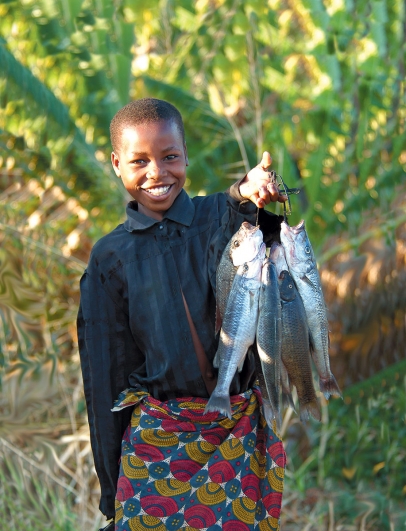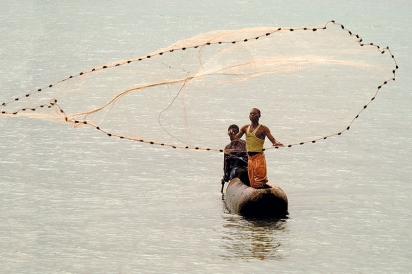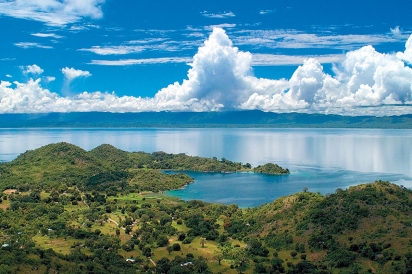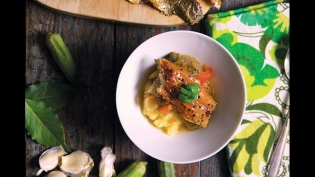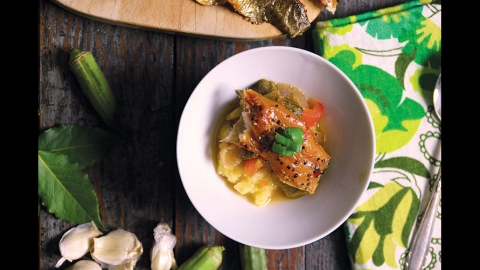Journey To Malawi: American flavors, African roots
In 1923, my maternal great-grandparents, Percy and Arlethia Heath, moved from Wilmington, North Carolina, to Philadelphia. Like the nearly seven million African-Americans who relocated between 1915 and 1970 during the Great Migration, they ventured there for work and a better life.
Like many before and after them, they held on to their Southern culture, most notably in the foods that they ate. New Year’s Day, for instance, was ushered in with a plate of black-eyed peas that was believed to bring prosperity. But this quintessential Southern dish is actually of African origin, and, like so many foods that hail from the South, its history is linked to the transport of Africans to the Americas.
In the introduction to High on the Hog: A Culinary Journey from Africa to America, cookbook writer and food historian Jessica B. Harris writes about her first experience traversing the markets of West Africa, observing how familiar vegetables and fruits—okra, black-eyed peas and watermelon—made evident the connection between the foods of Africa and the foods of the descendants of Africans who were forcefully taken to the Americas centuries ago.
Her book examines the staple foods that have become emblematic of numerous African countries, such as corn, which is native to the Americas but was brought to Africa by Portuguese slave traders in the 16th century. Harris illustrates how the transatlantic slave trade became the conduit through which indigenous foods were transplanted into the culinary cultures of the African and American continents.
Having recently returned from my own travels to the land of my ancestors, Harris’s book struck a chord. I was in Malawi for two months last summer, and I also encountered some of the foods that I grew up eating—okra, kale and sweet potatoes—at the outdoor markets in Balaka, a small, semi-rural township in the country’s southern region between the former capital, Zomba, and the current capital, Lilongwe. I was there interning at a television station, where a local journalist and I co-produced a program on Malawian foods, health and nutrition.
The Republic of Malawi is a small, landlocked country in southeast Africa with a population of approximately 17 million. Today, Malawi is democratic and politically stable but remains one of the poorest countries on the continent.
Malawi is highly agricultural, producing large cash crops of tobacco, tea, cotton, peanuts (groundnuts), sugar and coffee. Some form of food seems to be everywhere: from the numerous trees that bear fragrant papayas or juicy mangos to the fried meats, potatoes and small doughnut-like balls called mandasi that are sold at outdoor markets. Goats and chickens roam the red, unpaved streets like citizens. Even people in more urban areas, like the community of missionaries I lived with and the staff of the TV station where I worked, keep domestic fowl and maintain small vegetable gardens.
The jewel of the country is Lake Malawi—the third largest lake in Africa and a World Heritage Site—which contains an abundance of fish. Both chambo (tilapia) and mlamba (catfish) are popular in the Malawian diet. As most villages lack adequate electricity and financial means, refrigerators are a rarity. Local fishermen are experts at air drying or smoking to preserve the fruits of the lake, and many of the techniques employed are centuries old.
At the Balaka outdoor market, fishmongers can be seen selling an array of preserved fish that fill the air around their stalls with a heady, smoky scent. Once purchased, the dried fish are rinsed with water to remove any impurities and given a brief soak to soften before being prepared as a ndiwo (stew—referred to as “relish”) that accompanies the nation’s emblematic dish, nsima, finely ground white corn kernels cooked into a thick porridge.
On one occasion, I had the pleasure to prepare a meal with a colleague. We ventured off to the market together. Malawian markets are a kind of microcosm, where everything is sold, including produce, livestock, farm equipment, clothing and cell phones. It was there that I stood out the most as a foreigner. Children in the village would follow me shouting azungu! (“white man” in Chichewa, the local language—the name originally given to early missionaries and therefore all strangers). My Chichewa was limited, and I also dressed in pants, which are rarely worn by women under their chitenge, a colorful cloth that serves as a sort of apron.
At the market, I was thrilled to find a woman offering a beautiful display of bell peppers, sweet red onions, small chiles called kambuzi (part of the habanero family, but with less heat) and one of my favorite vegetables, okra. My colleague wanted to introduce me to a fish-based ndiwo, and I suggested that we incorporate these vegetables, explaining that okra, in particular, was a primary ingredient in gumbo, the American fish-based stew of Southern origin—a stew that has African roots. Okra seeds are said to have been brought by slaves to the Americas and the word “gumbo” literally means okra in some of the languages of Central, southeast and Southern Africa. However, Malawians rarely mix okra with their meat or fish stews, so my colleague was at first skeptical.
Once at her home, we huddled together in the outdoor kitchen and prepared our separate elements of the dish. In the village, most food is prepared on small, portable aluminum stoves heated with coals or large, wood-fi red stoves made out of clay. Using an aluminum stove, we stewed the mlamba (catfish) with tomatoes and added fried okra, bell peppers, onions and chiles. We sat on a mat and shared the delicious dish— Malawians eat communal style—with our hands. I remember the sensation of rolling a searing-hot piece of nsima (corn porridge) into a ball in my hand and dipping it into the savory stew. I experienced the mingling flavors of Africa and America, and felt quite at home.
Now when I walk through the farmers market here in South Bend, local tomatoes, red spring onions and small jade-colored okra pods seem more exotic, and trigger memories of my time in Malawi. Th e Midwest is plentiful with lakes, and we also use smoking techniques to preserve our fi sh—particularly trout. Having these ingredients at hand encouraged me to re-create the fish ndiwo that I helped to prepare. I like to serve it with stoneground Southern grits—but I confess I eat it with a fork!
The dish is a satisfying testimony to my African roots. Further, it is a tribute to those who brought these foods from Africa and from the South, disseminating our shared culinary heritage.


